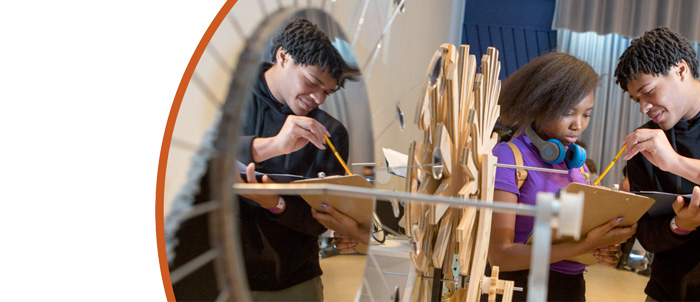Stereotype-based contagion in Problem Based Learning Contexts and STEM Identification
Effective Years: 2015-2021
This proposal was submitted in response to EHR Core Research (ECR) program announcement NSF 15-509. As part of ECR, this project is funded by the Research on Gender in Science and Engineering (GSE) program. GSE seeks to understand and address gender-based differences in science, technology, engineering and mathematics (STEM) education and workforce participation through education and implementation research that will lead to a larger and more diverse domestic STEM workforce. This project will focus on understanding why girls and women who are initially the most invested and motivated to succeed in Science, Technology, Engineering, and Mathematic (STEM) domains, are ironically the most likely to leave these domains. The research specifically will examine a social context that has received little research to date: Problem Based Learning (PBL). With the PBL approach individuals work on problems together in dyads or groups. Although this approach is gaining rapid popularity at all levels of education, the role that it may play in affecting girls' and women's performance and ultimately their identification with STEM fields remains unexplored. This research proposes that PBL settings may be threatening to at least one individual target in a task group. This threat may in turn spread to other women in the group--a phenomenon referred to as stereotype-based stress contagion--affecting all female group members' performance and memories of the situation accordingly. Using a multi-method approach that includes psychophysiological, neurological, and behavioral measures, the studies will explore how PBL settings may unintentionally create stereotype or social identity threatening contexts, i.e., stressful, physiologically arousing situations where negative stereotypes about women's math ability are salient. The studies also will investigate a series of downstream consequences of this process within individuals. For example, stress contagion may facilitate encoding of negative memories specific to the PBL context, even if group members were otherwise more resilient to threats. Importantly, negative emotional memories forged in PBL contexts may lay the foundation for learned aversions towards STEM domains that undermine STEM identification over time.
The research has five primary objectives: 1) Investigate whether stereotype-based stress experienced by one woman will spread to otherwise non-threatened male and female partners in interpersonal interactions, as reflected in synchronous neural, physiological and behavioral responses between two partners; 2) Assess whether stereotype-based stress contagion will engender worse dyadic performance and partner perceptions; 3) Determine whether stereotype-based stress contagion facilitates encoding of negative, stereotype confirming information among the partner placed under threat and her female interaction partner; 4) Examine whether stereotype-based stress contagion engenders learned STEM aversions that undermine feelings of competency among two or more stigmatized individuals in a group; and 5) Assess these processes in a highly unique but optimal real-world setting: High school freshman boys and girls who have chosen a STEM track and work regularly in Problem Based Learning contexts to solve STEM related problems. These studies will employ a variety of longitudinal, social and cognitive neuroscience methodologies, including EEG, psychophysiological and dyadic methodologies. This approach stands to provide a mechanistic understanding of how neural and psychophysiological biomarkers interact both within and between individuals to alter overt perceptions, behaviors and thus interactions between two individuals in PBL contexts; mechanisms that might otherwise be impossible to identify relying on behavioral or self-report measures alone.




